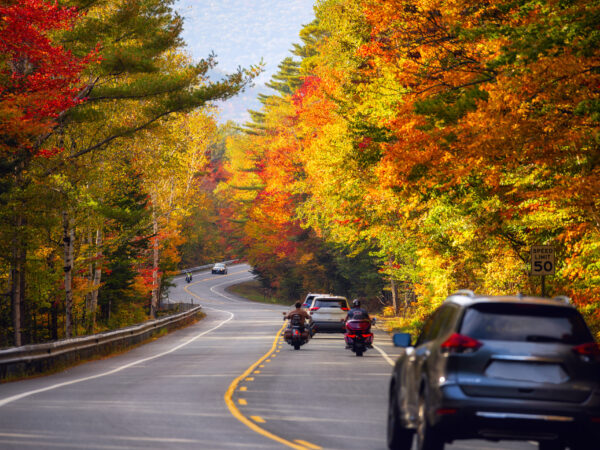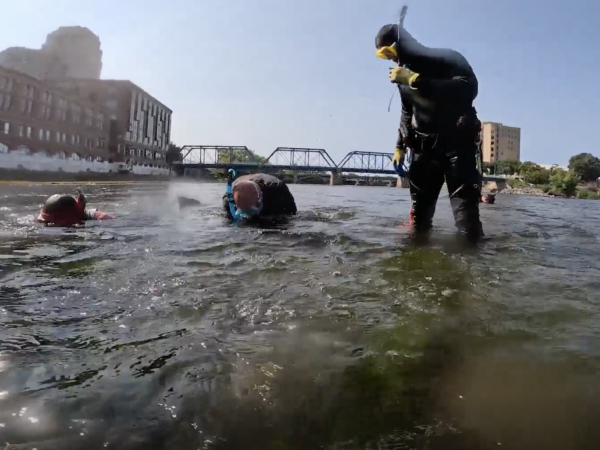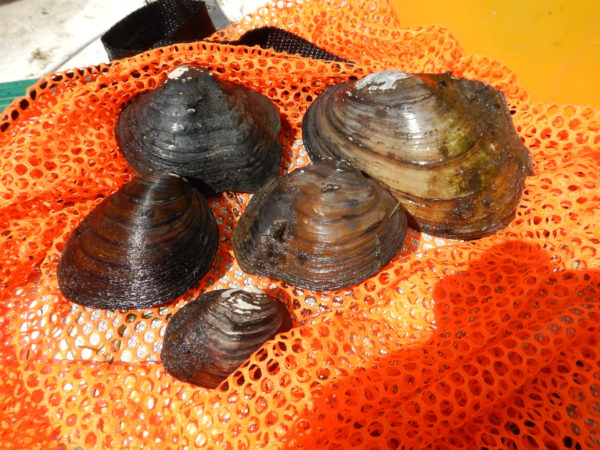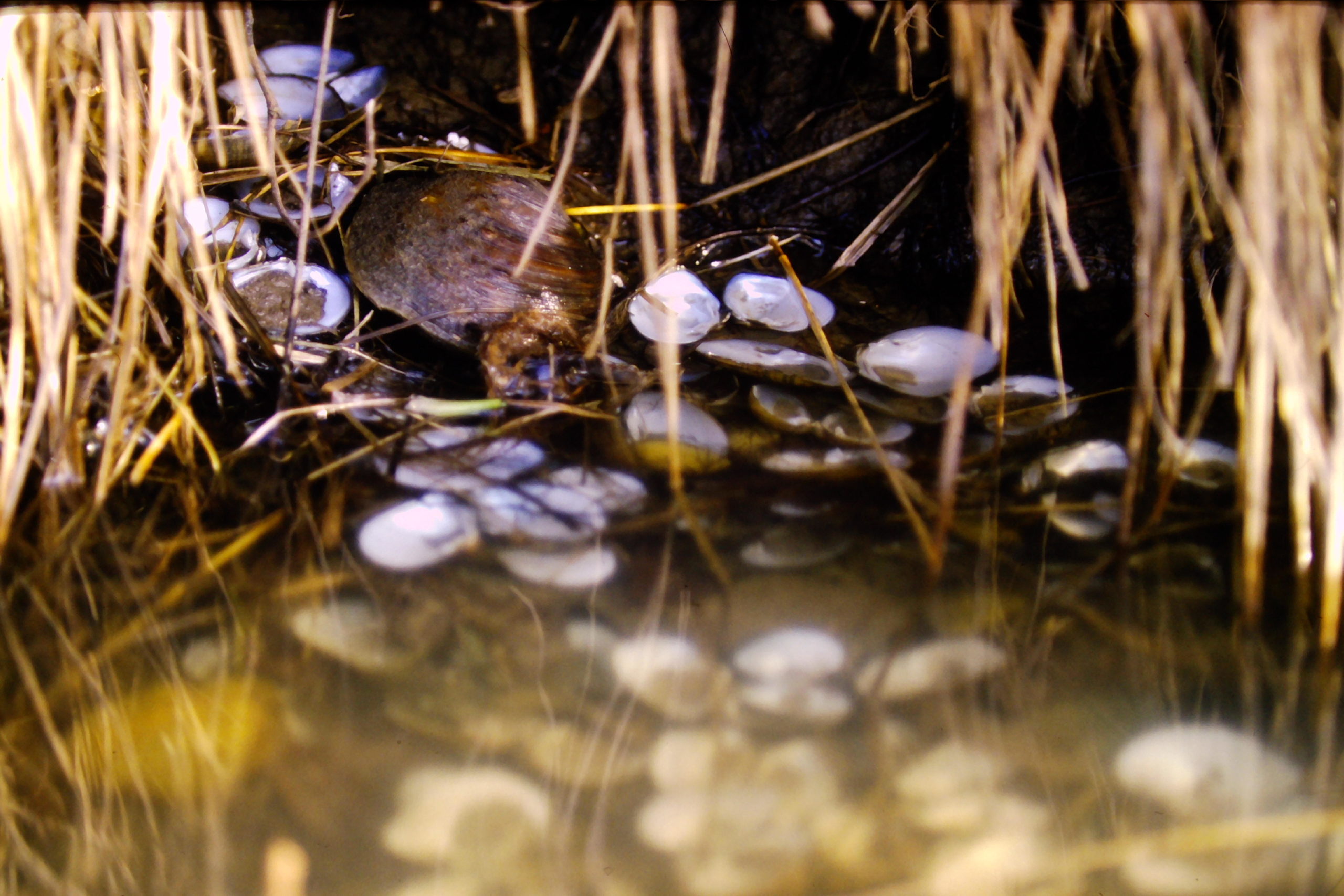
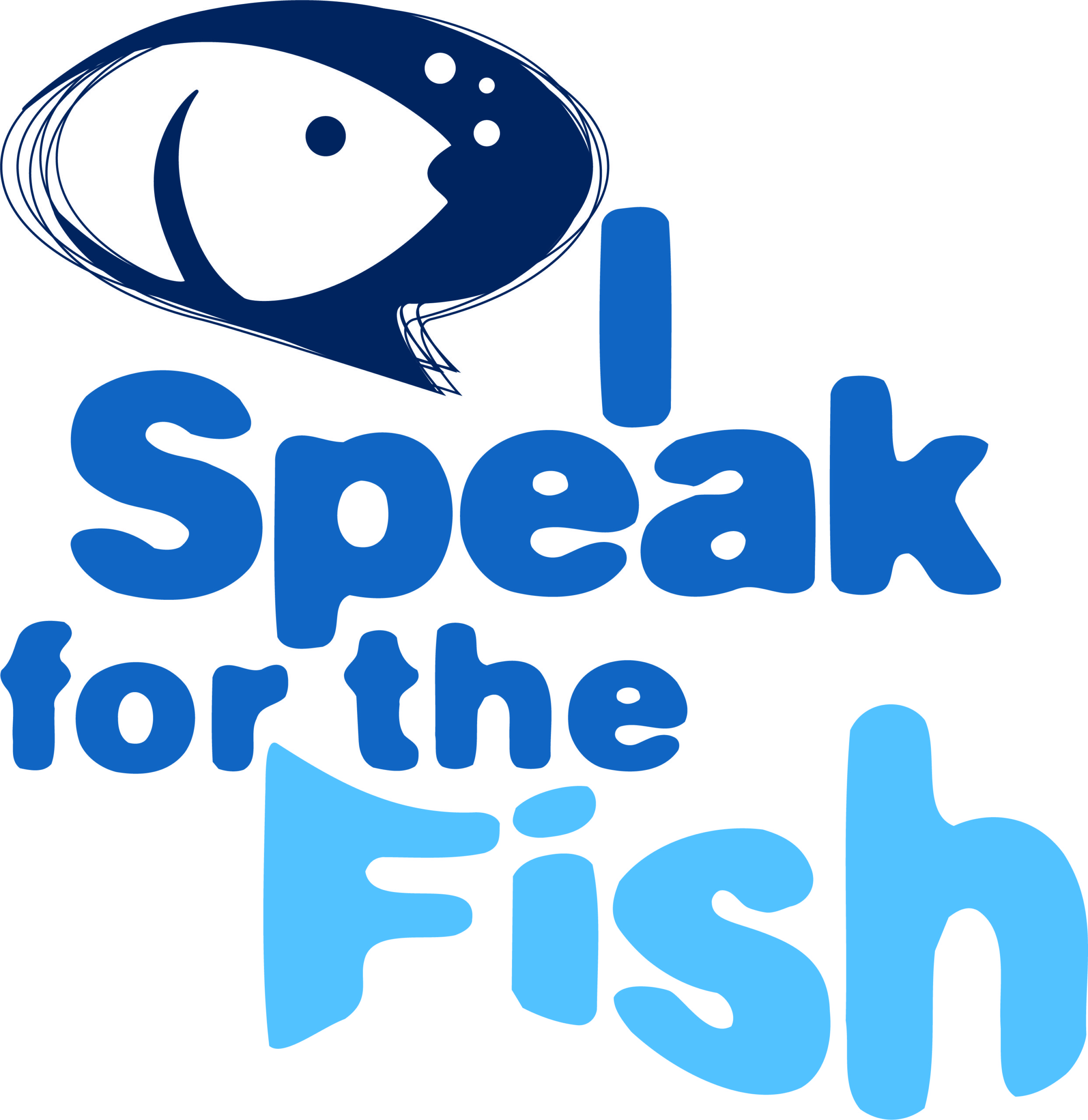 I Speak for the Fish is a new monthly column written by Great Lakes Now Contributor Kathy Johnson, coming out the third Monday of each month. Publishing the author’s views and assertions does not represent endorsement by Great Lakes Now or Detroit Public Television. Check out her previous columns.
I Speak for the Fish is a new monthly column written by Great Lakes Now Contributor Kathy Johnson, coming out the third Monday of each month. Publishing the author’s views and assertions does not represent endorsement by Great Lakes Now or Detroit Public Television. Check out her previous columns.
Before the era of plastic, freshwater mussels were the material of choice for the global button industry.
The inside wall of a freshwater mussel’s shell can range in color from pure white to shimmering lavenders and iridescent purples.
European settlers were thrilled to find an abundance of button-worthy mussels in the Great Lakes. Sadly, as was the pattern with other natural resources, mussels were over-harvested and entire species were lost forever.
The shell-button industry collapsed with the advent of plastics in the 1940s.
I recently stumbled upon some old interviews about freshwater mussels in the Illinois State Museum archive. In the first, a golden-ager recalls a time in the early 1900s when mussels were abundant in the Great Lakes. The second clip is an interview with one of the last commercial musselers in Illinois.
Today, freshwater mussels are among the most endangered organisms in North America with 65% of all species currently at risk, according to the Photo Field Guide to the Freshwater Mussels of Ontario.
Having spent a summer working to save an endangered species of freshwater mussel, it’s safe to say I’m a mussel nerd. I find their lifecycles fascinating. I think their shells are beautiful. And their nomenclature is delightful.
How can I not enjoy the whimsy of species with names like elktoe, fawntoe and pocketbooks, all of which bear a passing resemblance to their monikers?
In contrast, mapleleaf mussels are named for the bumps on their shells that resemble the pimples found on maple leaves, rather than any resemblance to the actual shape of the maple leaf.
A novice can immediately identify the huge shell of a threeridge mussel, but it takes a bit more practice to tell the difference between a male and female riffleshell.
I like the little snuffboxes and tiny purple lilliput.
Barefoot explorers should be wary of the aptly named heelsplitters. These mussels have a razor-thin, razor-sharp ridge along the top of their shells. A carelessly placed, shoeless foot can sustain a seriously painful, heel-splitting injury.
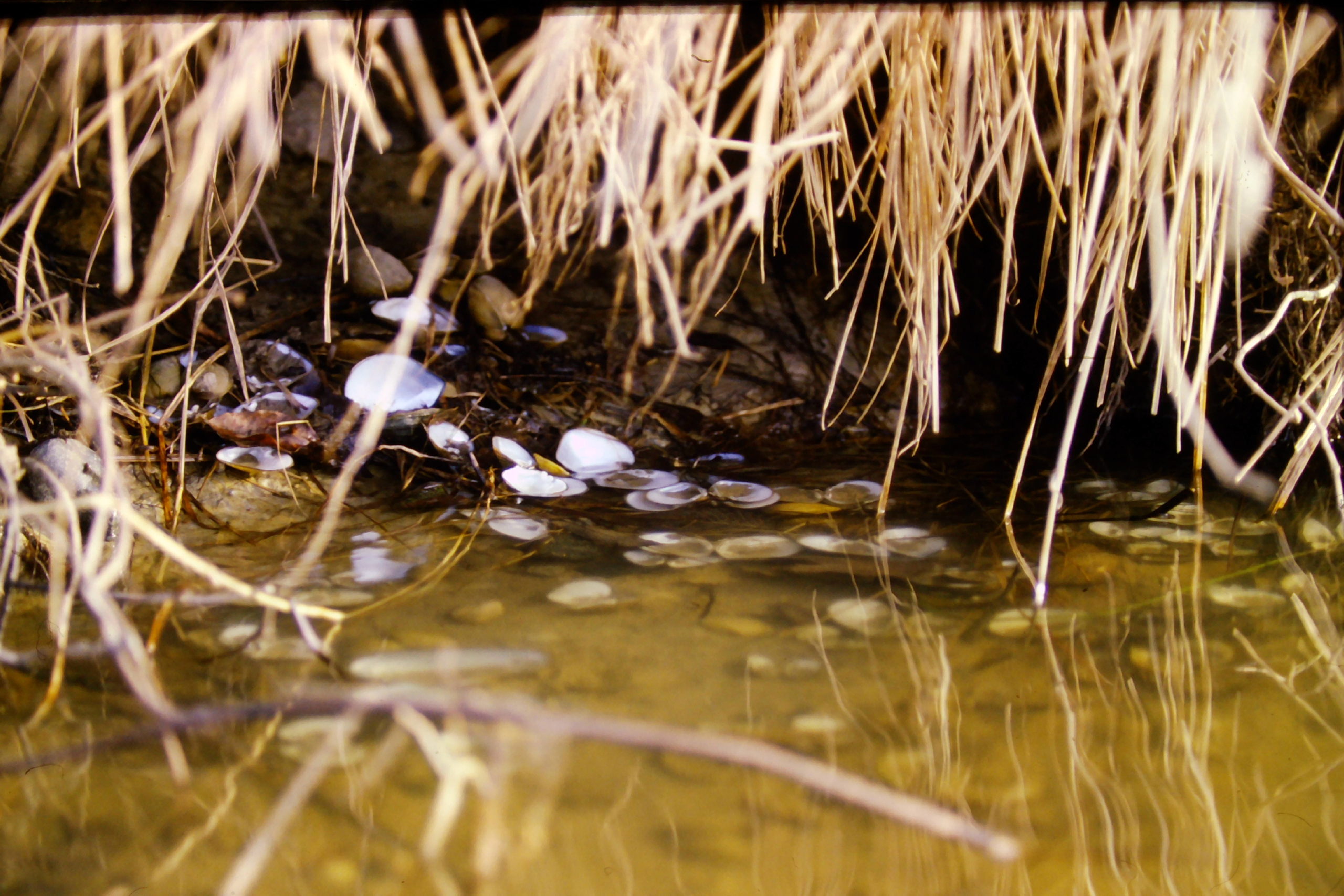
Shell midden (Photo Credit: Greg Lashbrook/PolkaDot Perch)If you want to learn more about a species, a good place to start is with their food.
A quick toss of my compost pile reveals traces of our past week’s meals: copious eggshells and spinach leaf stems from a mid-week quiche, the green hats from the strawberries that sweetened our breakfast cereal and crowned our shortcakes. These food scraps offer clues to my dietary choices.
Archeologists love to dig through the remains of ancient fire pits for clues to the eating habits of early civilizations, while biologists study droppings, dung, pellets and all manner of waste to discover what animals have eaten.
But for the average curious person, a much easier and far less odious way to learn what some animals are eating is to find a riverbank midden.
A midden is a pile of discarded shells located near the water’s edge where muskrat, mink or otter reside.
When a muskrat finds a mussel, they usually swim to a favorite spot of the riverbank and climb out of the water to enjoy the meal. When every morsel of mussel is eaten, the empty shells are tossed aside. Daily feedings create pearly piles of shells along the riverbank.
Some of these shell piles form large mounds that make them fairly easy to locate. Sometimes the muskrats use multiple locations on shore, creating numerous small stashes of shells. Those are harder to identify.
When canoeing or kayaking, an inquisitive eye can often detect a midden when the sunlight gleams off the discarded shells.
Sorting through midden shells is an excellent way to evaluate what species of mussel that might remain in an area.

Muskrat (Photo Credit: Greg Lashbrook/PolkaDot Perch)
Muskrats enjoy all shapes and sizes of mussel. And their middens usually contain shells representing most, if not all, of the mussel species living nearby.
Many Native American Tribes in the Great Lakes honor the muskrat for their helpful role in the Traditional creation story. The Anishinaabe name for muskrat is wa-zhushk and according to Native tradition the muskrat can be a bearer of good fortune when treated kindly.
Muskrats are semiaquatic.
Semiaquatic refers to species that spend a significant portion of their life cycle in or near water. In the Great Lakes, this includes everything from muskrats and minks to otters, turtles and ducks.
The semiaquatic muskrat spends most of its day floating on the surface nibbling on wild rice, cattail shoots and other vegetation. Similar to the way sea otters nap on top of kelp beds, muskrats can often be seen relaxing on top of lily pads and native grass beds.
I’m particularly impressed with some of the muskrats creative problem-solving skills like setting up protein pantries and outsmarting the biggest mussel in the Great Lakes.
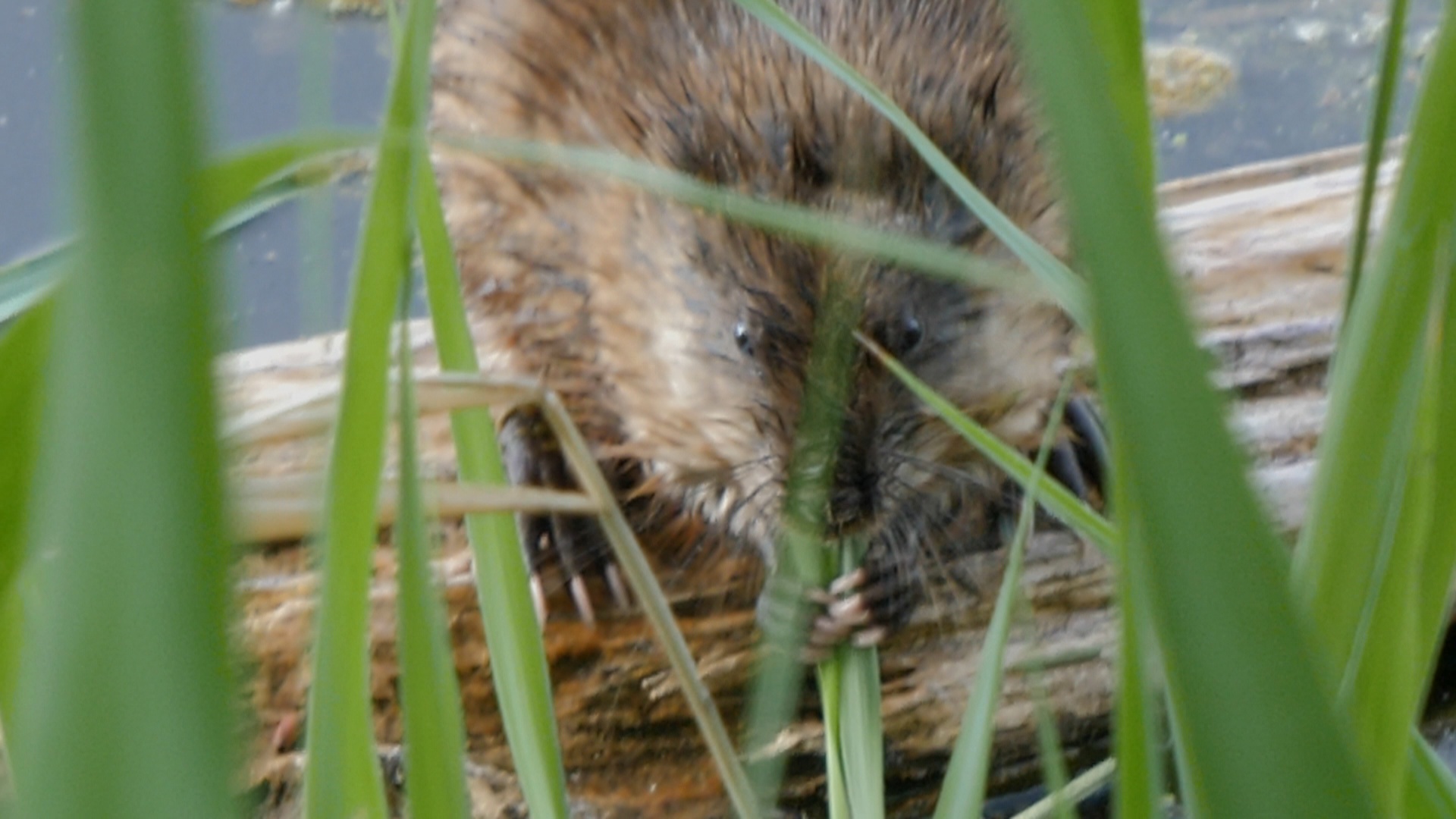
Muskrat (Photo Credit: Greg Lashbrook/PolkaDot Perch)
Muskrats are mostly vegetarian, but they eat some protein and freshwater mussels are a year-round staple. When plant food is scarce, as in the winter, muskrats increase their protein intake. To ensure they always have a ready supply of meat available, some muskrats create their own food storage systems.
Like squirrels socking away nuts, muskrats collect and store mussels for easy retrieval when needed. In shallow water, not far from active middens, we often find a couple of dozen mussels clustered together.
On a blistery day in February, when the river is nearly frozen solid, I picture the muskrats snuggled up in their den. I imagine at suppertime, being too cold for foraging, that they just grab a couple of pigtoes and maybe a threehorn wartyback from their pantry.
Threeridge are one of the largest and most common mussel species we see in the Great Lakes. They can grow to 7 inches and their uber-thick shells can lock together so tightly that even a skilled musseler with a sharp tool can struggle to crack one open.
Muskrats use a far less strenuous method.
Rather than struggle to break the shell open, muskrats simply place the large mussel on shore. Since the mussel can’t live out of the water, it’s not long before it dies and the shell naturally releases for a super-easy, super-sized muskrat meal.
The more I get to know muskrats, the more I think they got a raw deal on their name from European settlers.
I mean, the name they were given includes rat. Rats are carriers of disease. The villains in animated films. The foreshadowers of doom in literature. It’s not an association that garners public affection.
I’m thinking a rebranding campaign as swimming hamsters verses aquatic rats might help.
As is usually the case for me, the more I learn about one species the more I discover about others. Before I got into mussels, I couldn’t tell you three interesting things about muskrat. It was my interest in mussels that drew me to the middens. And from middens, I arrived at a new appreciation and admiration for the humble muskrat.
Catch more from Kathy Johnson on Great Lakes Now:
I Speak for the Fish: Mussel memory, the race to save an endangered species
I Speak for the Fish: April showers bring vernal pools and baby salamanders
API key not valid. Please pass a valid API key.Featured image: Muskrat (Photo Credit: Greg Lashbrook/PolkaDot Perch)


